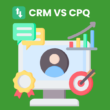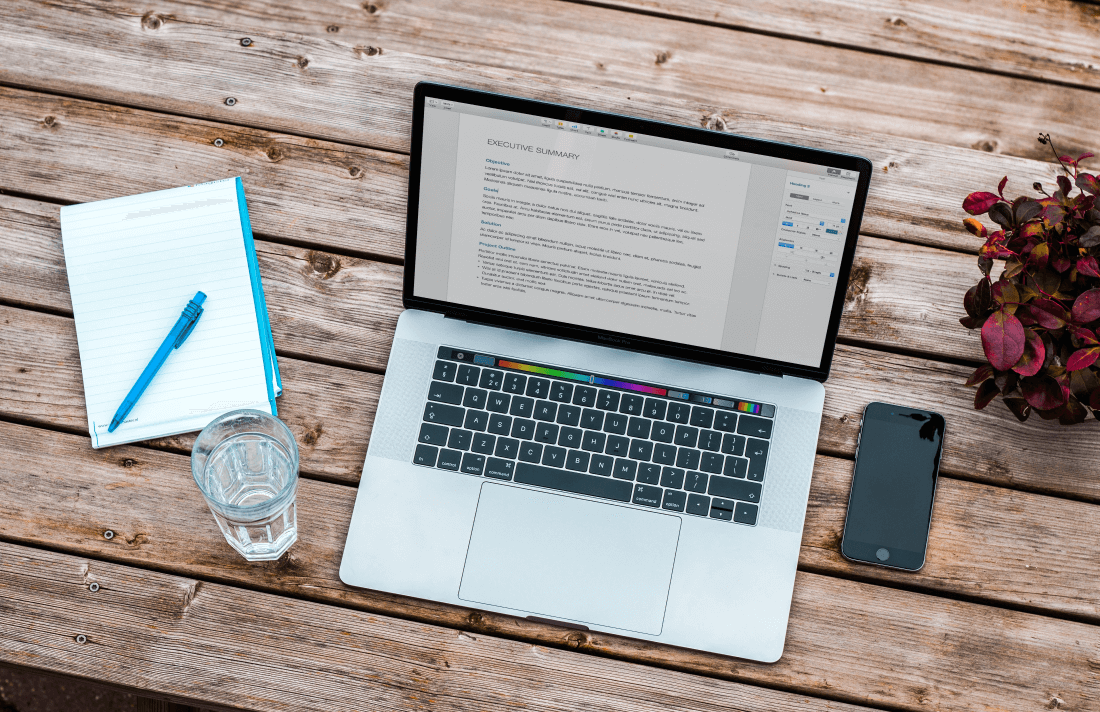Table of Contents Show
In today’s fast-paced work environment, optimizing productivity is crucial for success. Effective time management and task prioritization are key strategies that can significantly enhance workplace efficiency. By implementing a range of tools, techniques, and organizational practices, you can create an environment conducive to productive work.
Additionally, maintaining a healthy work-life balance and building habits that support productivity are essential for long-term success. In this blog post, we will explore various strategies to boost workplace productivity through time management, task prioritization, workspace organization, and personal well-being.
Strategies for Time Management
Implementing time blocking techniques can help you stay focused and eliminate distractions, allowing for more productive work within designated periods.
Create a daily schedule to effectively manage your time and tasks. Dedicate specific time slots for different activities, allowing you to stay organized and focused throughout the day.
Prioritize your tasks based on importance and urgency. Identify key objectives that align with your goals, ensuring that you dedicate adequate time and resources to tackle them first.
Implement time-blocking techniques by setting aside dedicated blocks of time for specific tasks or projects. This helps prevent distractions and enables focused work within designated periods.
Eliminate time wasters by identifying unproductive habits or activities that consume valuable working hours. Limit unnecessary meetings, delegate non-essential tasks, and utilize technology tools to streamline processes where possible.
Creating a Daily Schedule
Identifying and organizing daily tasks is crucial for effective time management. Start by making a list of all the tasks that need to be completed, prioritizing them based on importance and urgency. By having a clear understanding of what needs to be done, you can allocate specific time slots for each task, ensuring that no task is overlooked or delayed.
Consider your personal energy levels and peak productivity times when scheduling your tasks. Some people are more alert and focused in the morning, while others may find their energy peaks in the afternoon or evening.
Take advantage of these periods by scheduling more demanding or complex tasks during your high-energy times, allowing you to work at your best and maximize productivity throughout the day.
Setting Priorities
Determining the importance and urgency of tasks is crucial for effective time management. By evaluating the impact and time sensitivity of each task, you can allocate your resources efficiently. Utilizing prioritization methods like the Eisenhower Matrix enables you to categorize tasks based on their significance and urgency, ensuring that important deadlines are met while maintaining focus on long-term goals.
Additionally, consulting with team members or supervisors when needed allows for collaboration and ensures alignment in prioritizing tasks among the entire team.
Time Blocking
Blocking out specific periods for focused work is crucial for maximizing productivity. By dedicating uninterrupted time slots to important tasks, individuals can eliminate distractions and fully concentrate on completing their assignments efficiently.
Scheduling breaks in between these periods also plays a vital role in preventing burnout and maintaining mental clarity throughout the day. Additionally, assigning dedicated time for meetings, emails, and administrative tasks ensures that essential team activities are given proper attention without disrupting the flow of individual tasks.
Eliminating Time Wasters
Identifying common distractions in the workplace is crucial for improving productivity. By recognizing what frequently pulls our attention away from important tasks, we can proactively address these issues.
Whether it’s excessive email notifications or constant social media updates, turning off unnecessary notifications can significantly minimize interruptions and allow us to focus on essential tasks.
Streamlining processes and delegating non-essential tasks are effective strategies to eliminate time wasters. By examining current workflows and identifying areas that can be simplified or automated, teams can save valuable time and allocate resources more efficiently.
Delegating non-essential tasks to capable team members not only lightens individual workloads but also promotes collaboration and ensures that each task is handled by those with the necessary expertise.
Techniques for Task Prioritization
Using effective techniques for task prioritization can significantly boost workplace productivity. One popular method is the Eisenhower Matrix, which involves categorizing tasks based on their urgency and importance. Another approach is the Pareto Principle, also known as the 80/20 rule, where you focus on completing tasks that will have the greatest impact.
Lastly, implementing the ABC Method allows you to assign priority levels to each task based on their significance and deadlines. By incorporating these strategies into your workflow, you can effectively manage your time and increase your overall productivity in the workplace.
Using the Eisenhower Matrix
Urgent vs Important: The Eisenhower Matrix is a powerful tool for distinguishing between urgent and important tasks. By categorizing your tasks into four quadrants based on their urgency and importance, you can prioritize your work effectively. Focus on the important tasks that contribute to long-term goals rather than getting caught up in urgent but less essential activities.
Delegate or Delete: When using the Eisenhower Matrix, be mindful of tasks that can be delegated or eliminated altogether. Delegating tasks frees up your time for more crucial responsibilities while eliminating unnecessary tasks helps streamline your work process. Assess each task critically to determine if it truly requires your attention or if it can be passed on to someone else or removed from your workload entirely.
Avoiding Procrastination: One of the key benefits of utilizing the Eisenhower Matrix is its ability to combat procrastination. By identifying and prioritizing important but non-urgent tasks, you can prevent them from being put off indefinitely. Take proactive steps towards completing these tasks by breaking them down into smaller, manageable steps and setting deadlines for yourself.
Pareto Principle
Identifying the Vital Few can significantly improve workplace productivity. By using the Pareto Principle, also known as the 80/20 rule, you can focus your efforts on the tasks that will have the highest impact. Rather than spreading yourself thin across numerous tasks, prioritize those that will yield the greatest results.
Applying the 80/20 Rule is a powerful strategy for boosting workplace productivity. Instead of spending equal amounts of time on every task, identify which ones contribute most to your overall goals and allocate more resources accordingly. This approach allows you to maximize efficiency by concentrating on high-impact activities and minimizing wasted effort on low-value tasks.
The ABC Method
Categorizing tasks by priority is a key aspect of the ABC Method. This method assigns an ‘A’ to the most important tasks and a ‘B’ to secondary priority tasks. By categorizing tasks in this way, individuals can focus their energy on completing critical assignments first, ensuring that essential work gets done efficiently.
Tasks labeled as ‘A’ in the ABC Method are given top priority. These are crucial activities that directly contribute to overall goals or have strict deadlines. By tackling these high-priority tasks head-on, individuals can make significant progress toward achieving desired outcomes and meet important targets within set timeframes.
Tools and Resources for Productivity
Digital calendars and task managers are essential tools for boosting workplace productivity. These platforms allow you to organize your schedule, set reminders, and track deadlines effectively. By having a centralized system for managing your tasks and appointments, you can easily prioritize your workload and allocate time accordingly.
Project management software is another valuable resource for enhancing productivity in the workplace. These tools provide a comprehensive overview of projects, allowing teams to collaborate efficiently, assign tasks, track progress, and manage timelines. With real-time updates and streamlined communication channels within the software, project management becomes more organized and effective.
Time-tracking apps offer a practical solution for monitoring how time is spent on different activities throughout the workday. By understanding where your time goes, you can identify areas of improvement or potential distractions that hinder productivity. These apps also help in setting goals and establishing productive habits by providing insights into how much time is allocated to specific tasks or projects.
Overall, leveraging digital calendars and task managers as well as utilizing project management software along with time tracking apps will optimize efficiency in the workplace by facilitating the better organization of schedules/tasks/deadlines; promoting collaboration among team members while ensuring accountability; enabling effective allocation of resources/time/energy; identifying areas where improvements are required while fostering goal-setting/productive habits
Digital Calendars and Task Managers
Integration with email and calendar systems allows for seamless synchronization of tasks, events, and appointments. By integrating digital calendars with email platforms such as Outlook or Google Calendar, users can easily manage their schedule in one centralized location. This eliminates the need to switch between different applications and ensures that all important deadlines and meetings are accounted for.
The ability to set reminders and notifications is a crucial feature of digital calendars and task managers. Users can customize these alerts based on their preferences, ensuring they never miss an important deadline or meeting again. Whether it’s a pop-up notification on their desktop or a push notification on their mobile device, these reminders serve as helpful prompts that keep individuals organized and focused throughout the day.
Collaborative features in task managers facilitate effective team coordination by allowing multiple users to access shared projects simultaneously. With real-time updates and status-tracking capabilities, team members can stay informed about each other’s progress without constant back-and-forth communication. This streamlines workflow processes enhances collaboration efficiency, and ultimately boosts overall productivity within teams working towards common goals.
Project Management Software
Task assignment and tracking are made simple with project management software. This powerful tool allows you to assign tasks to team members, set deadlines, and track progress all in one place. With real-time updates and notifications, everyone stays on the same page, ensuring that nothing falls through the cracks.
Gantt charts provide visual project planning that helps teams stay organized and focused. These visual timelines allow you to see the entire scope of your project at a glance, making it easier to allocate resources effectively and identify potential bottlenecks. With drag-and-drop functionality, adjusting timelines is a breeze.
File sharing and document collaboration is seamless with project management software. Instead of sifting through endless email chains or searching for files on various platforms, everything can be stored centrally within the software. Team members can collaborate in real-time on documents, leaving comments or suggestions without any confusion about version control.
By utilizing task assignment and tracking features along with Gantt charts for visual project planning and file sharing capabilities within project management software tools are empowered to streamline workflows while enhancing transparency across all levels of an organization
Time Tracking Apps
Time Tracking Apps offer a range of features to optimize time management and enhance workplace productivity. With real-time tracking of time spent on tasks, users can accurately monitor their progress and stay focused on completing essential activities.
The automated timesheet generation simplifies administrative work, ensuring accurate documentation of hours worked. Additionally, the reporting and analytics functionality helps identify time-wasting activities, enabling individuals to make informed decisions for increased efficiency.
- Real-time tracking of time spent on tasks
- Automated timesheet generation
- Reporting and analytics to identify time-wasting activities
Creating an Organized and Efficient Workspace
Creating an organized and efficient workspace is essential for maximizing workplace productivity. Start by decluttering and organizing your physical space, ensuring everything has a designated place and is easily accessible. Implement strategies like color-coding or labeling to streamline your workflow further.
Additionally, optimize ergonomics by setting up an ergonomic workstation that promotes comfort and reduces the risk of strain or injury. Invest in a supportive chair, adjustable desk, and proper lighting to enhance productivity levels throughout the day. Finally, minimize distractions by eliminating unnecessary noise or visual disruptions from your surroundings. Consider using noise-canceling headphones or installing soundproof panels to create a quieter work environment conducive to focused concentration.
Decluttering and Organizing
Implementing a filing system is crucial for easy access to important documents. Categorize files according to their purpose and create clearly labeled folders. Regularly review and update the system to ensure efficiency.
Clear your workspace of unnecessary items that can cause distractions. Keep only essential tools and materials within reach, creating a clean and focused environment that promotes productivity.
Designate specific areas in your workplace for different tasks. Create separate zones for brainstorming, planning, and executing projects. This organization will help streamline workflows and improve overall efficiency in completing tasks without unnecessary interruptions or confusion.
Optimizing Ergonomics
Adjusting your chair height, backrest, and armrests is crucial for maintaining proper posture while working. A well-aligned posture helps prevent discomfort and musculoskeletal issues. Position your computer monitor at eye level to reduce strain on your neck and eyes.
This promotes a more comfortable viewing experience and decreases the risk of developing eye fatigue. Lastly, consider using an ergonomic keyboard and mouse to minimize wrist discomfort during long hours of typing or clicking. These small adjustments can greatly improve your overall comfort and productivity in the workplace.
In our quest for workplace productivity, it’s essential to optimize ergonomics for maximum efficiency. By adjusting chair height, backrest angle, and armrest position according to individual needs, we foster proper posture that minimizes strain on the body.
Positioning the computer monitor at eye level reduces neck tension while promoting better focus. Employing ergonomic keyboards and mice alleviates wrist discomfort associated with extended periods of use—ensuring comfort throughout the workday serves as a catalyst for enhanced productivity levels within any organization
Minimizing Distractions
Turning off notifications on your phone or computer during focused work periods can significantly minimize distractions. By doing so, you create a distraction-free environment that allows you to concentrate solely on the task at hand.
Additionally, designating specific times for checking emails instead of constantly monitoring them helps you stay focused and avoid constant interruptions. Furthermore, using noise-canceling headphones or playing soft background music can effectively drown out external sounds and enhance your concentration.
- Turn off notifications on your phone or computer
- Designate specific times for checking emails
- Use noise-canceling headphones or play soft background music
Maintaining Work-Life Balance
Setting clear boundaries between work and personal life is crucial for maintaining a healthy work-life balance. Establishing designated working hours and sticking to them helps create structure and allows for better time management. It is important to communicate these boundaries with colleagues, clients, and even family members, ensuring that everyone understands when you are available for work-related matters.
Taking regular breaks throughout the day is essential for workplace productivity. Stepping away from your desk or workspace not only provides a mental break but also improves focus and creativity when you return. Use these breaks to engage in activities that promote relaxation or physical movement, such as going for a walk outside or practicing deep breathing exercises.
Setting Boundaries
Establishing a dedicated workspace is crucial for workplace productivity. By designating a specific area for work, you create a mental boundary between your personal life and professional responsibilities.
Additionally, defining clear working hours helps you maintain focus and structure in your routine, allowing for better time management. Minimizing distractions is another essential aspect to consider; removing potential interruptions such as social media notifications or noisy environments can significantly enhance concentration levels and overall productivity.
Taking Breaks
Implementing the Pomodoro Technique can be a game-changer for workplace productivity. By breaking your work into focused, 25-minute intervals followed by short breaks, you can maintain focus and avoid burnout.
Engaging in physical activity during breaks is another effective strategy to recharge and increase productivity. Whether it’s stretching, going for a walk, or doing quick exercises, physical movement stimulates blood flow and boosts energy levels. Practicing mindfulness or meditation during breaks can help clear the mind of distractions and promote relaxation, leading to improved concentration when returning to work.
- Set a timer for 25 minutes and fully commit to your task.
- Take short breaks (5 minutes) after each focused interval.
- Use break time to engage in physical activity like stretching or walking.
- Practice mindfulness or meditation techniques during breaks to relax the mind.
Avoiding Multitasking
Prioritizing tasks based on importance and urgency is crucial for avoiding multitasking. By identifying the most important and time-sensitive tasks, you can allocate your resources efficiently and focus on one task at a time.
Additionally, utilizing project management tools can help you stay organized by providing a clear overview of your tasks, deadlines, and progress. Finally, batching similar tasks together minimizes context switching and allows for greater productivity as you can fully immerse yourself in one type of activity before moving on to the next one.
Building Healthy Habits for Productivity
Building healthy habits is crucial for optimizing workplace productivity. Effective time management and task prioritization are essential strategies to enhance efficiency and output.
By setting clear goals, breaking tasks into manageable chunks, and utilizing productivity tools, individuals can effectively manage their time and accomplish more in a day. Additionally, maintaining focus through minimizing distractions and creating a conducive work environment further boosts productivity levels.
Getting Enough Sleep
Establishing a consistent sleep schedule is essential for getting enough rest. Stick to a set bedtime and wake-up time every day, even on weekends. This helps regulate your body’s internal clock and promotes better quality sleep.
Creating a relaxing bedtime routine can help signal to your body that it’s time to wind down and prepare for sleep. Engage in activities like reading a book, taking a warm bath, or practicing deep breathing exercises to relax your mind and body.
Limiting exposure to electronic devices before bed is crucial as the blue light emitted by screens can disrupt your sleep patterns. Avoid using smartphones, tablets, or laptops at least an hour before going to bed to ensure you have more restful nights.
Exercising Regularly
Finding an exercise routine that fits your lifestyle is crucial for maintaining regular physical activity. Whether it’s joining a gym, taking up a sport, or incorporating at-home workouts, finding something that you enjoy and can stick to is key.
Additionally, incorporating physical activity into your daily commute by walking or biking can help increase your overall fitness level and save time in traffic. Exploring different types of exercise not only helps prevent boredom but also targets different muscle groups for a well-rounded workout.
- Joining a gym
- Taking up a sport
- Incorporating at-home workouts
- Walking or biking during your commute
- Trying out various types of exercise
Practicing Mindfulness and Meditation
- Take short breaks throughout the day to engage in deep breathing exercises
- Utilize guided meditation apps or videos for a quick mental reset
- Enhance your mindfulness skills by attending workshops or classes that provide practical techniques and strategies.
Fueling Your Body with Proper Nutrition
Planning Balanced Meals in Advance is crucial for fueling your body with proper nutrition. By taking the time to plan out your meals ahead of time, you can ensure that you are getting all the necessary nutrients and avoiding unhealthy choices.
Incorporating Nutrient-Rich Foods into your diet is another key aspect of fueling your body properly. These foods provide essential vitamins, minerals, and antioxidants that support overall health and wellbeing. Avoiding Excessive Sugar and Processed Foods is equally important as these can drain your energy levels and negatively impact productivity.
- Plan balanced meals in advance
- Include nutrient-rich foods in your diet
- Avoid excessive sugar and processed foods
As It Turns Out
Implementing these four habits into your daily routine can significantly increase your productivity and help you get more done. By limiting your exposure to electronic devices before bed, you can ensure that you have more restful nights, giving you the energy you need to tackle the day ahead.
Regular exercise is also crucial for maintaining productivity. Finding an exercise routine that you enjoy and can stick to is key. Whether it’s joining a gym, taking up a sport, or incorporating at-home workouts, the important thing is to keep moving. Additionally, incorporating physical activity into your daily commute can help increase your overall fitness level and save time in traffic.
Practicing mindfulness and meditation can also have a positive impact on your productivity. Taking short breaks throughout the day to engage in deep breathing exercises or utilizing guided meditation apps or videos can provide a quick mental reset and help you stay focused.
Fueling your body with proper nutrition is another important aspect of increasing productivity. Planning balanced meals in advance and incorporating nutrient-rich foods into your diet can ensure that you are getting all the necessary nutrients to support your overall health and well-being. Avoiding excessive sugar and processed foods is equally important as these can drain your energy levels and negatively impact productivity.
By implementing these habits into your daily routine, you can optimize your productivity and get more done. Remember, it’s important to find what works best for you and make these habits a priority. Your productivity and overall well-being will thank you.
More reading for you:











1 comment